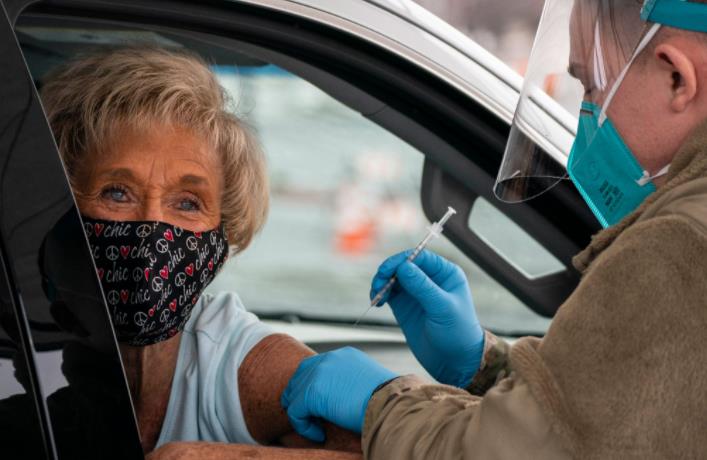January 28th – According to Johns Hopkins University, as of January 26 local time, more than 79,000 people have died of the novel coronavirus in the United States.
January has not only become the deadliest month since the outbreak of the epidemic in the United States, but also described it as “mileage sadness” by the American media.
CNN wrote a number of articles on the 26th and 27th, exposing the current anti-epidemic situation of vaccine shortages, racial inequality, mutant COVID-19 spread in many places in the United States. The chief medical reporter sighed even more, “The worst days may be yet to come.”
Vaccine supply cannot meet the needs of states.
After nearly a year of stress in dealing with the coronavirus pandemic, all states in the U.S. are eager to get a rapid vaccine and try to get back to normal.” We must defeat [COVID-19], we can no longer bury loved ones who died of this virus, and have enough of hospitals that are under heavy pressure.” Mississippi Governor Tate Reeves said when announcing that the state has distributed about 200,000 vaccines.
While he was “encouraged” by the new administration’s approach to vaccination, Maine’s CDC director Nirav Shah said he also said the state is still struggling with a vaccine shortage: “We’ve learned that the number of people who want to get vaccines now far exceeds our existing vaccine supply.” Indiana Governor Holcomb also said on the 27th that like the other 49 governors, Indiana needs more vaccines.
Vaccination highlights racial inequality
CNN’s analysis of 14 states in the United States found that the average vaccination rate of white people far exceeds that of African-American and Latino people.
On average, more than 4% of white people have been vaccinated against the coronavirus, about 2.3 times that of African descent (a vaccination rate of 1.9%) and 2.6 times that of Hispanics (a vaccination rate of 1.8%).
Not only are ethnic minorities far less vaccinated than whites, they are hit harder by COVID-19 than whites: African-Americans and Latinos have almost three times the death rate of COVID-19 and the hospitalization rate is about four times that of the white population, according to the CDC.
Data from the Kaiser Family Foundation also show that in many states, white people who have been vaccinated exceed the total number of COVID-19 cases in this group, while in some similar states, African-Americans and Latinos are vaccinated less than their number of confirmed cases and deaths.
In Pennsylvania, for example, African Americans account for 13% of all COVID-19 deaths, but only 3% of the number of people vaccinated. The state’s vaccine data sounded a “warning call” for racial inequality, said Custis, president and CEO of the Philadelphia City Alliance, Pennsylvania, and the federal government should address this issue as soon as possible: “Those who are dying, those in need of African descent. Everyone needs a vaccine, but the African-American community has ‘fired’ and [the federal government] needs to go to the community to vaccinate them.”
The spread of mutant COVID-19 exacerbates fear
At present, the spread of mutant coronavirus in many parts of the United States has also increased public fear. Minnesota officials announced on the 25th that they had found a P.1 mutation in a passenger from Brazil.
This mutant COVID-19 is one of four new strains closely monitored by the CDC and seems to be more likely to spread.
On the 26th, Kentucky Governor Andy Bescher announced that the first mutant novel coronavirus was discovered in the United Kingdom, and two cases of infection had been reported in Kentucky.
According to the CDC model, this mutation strain, known as B.1.1.7, spreads faster. On the 27th, New York Governor Cuomo and state health commissioner Howard Zucker said that more than 20 states in the United States have detected this variant of the novel coronavirus, and 42 confirmed cases have been confirmed in New York State.
The threat of mutating COVID-19 has made California reopening more concerning, the latest “epicenter” of the U.S. coronavirus pandemic, says Barbara Ferrell, the Los Angeles County Public Health Director.
Ferrer noted that asymptomatic transmission is a problem: “We need to be cautious about the next few weeks. After reopening, we have seen an increase in the number of coronavirus cases, which is unbearable.”



